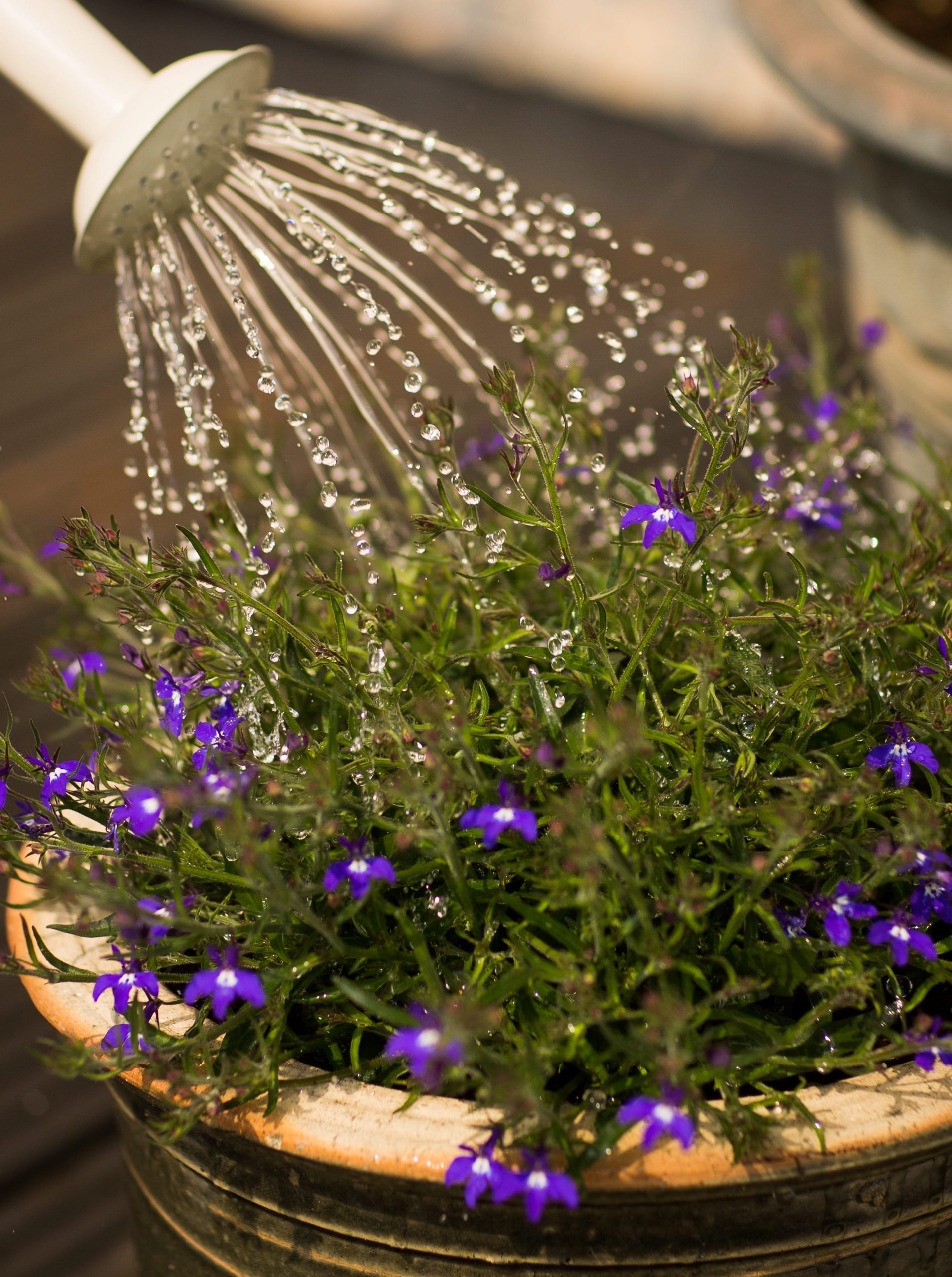In last week’s blog post, we shared tips from the Good Earth Plant Company experience on whether your plants like a drink of something other than water.
Readers told us they enjoyed it – and then said “But we could really use more advice about watering our indoor plants.”
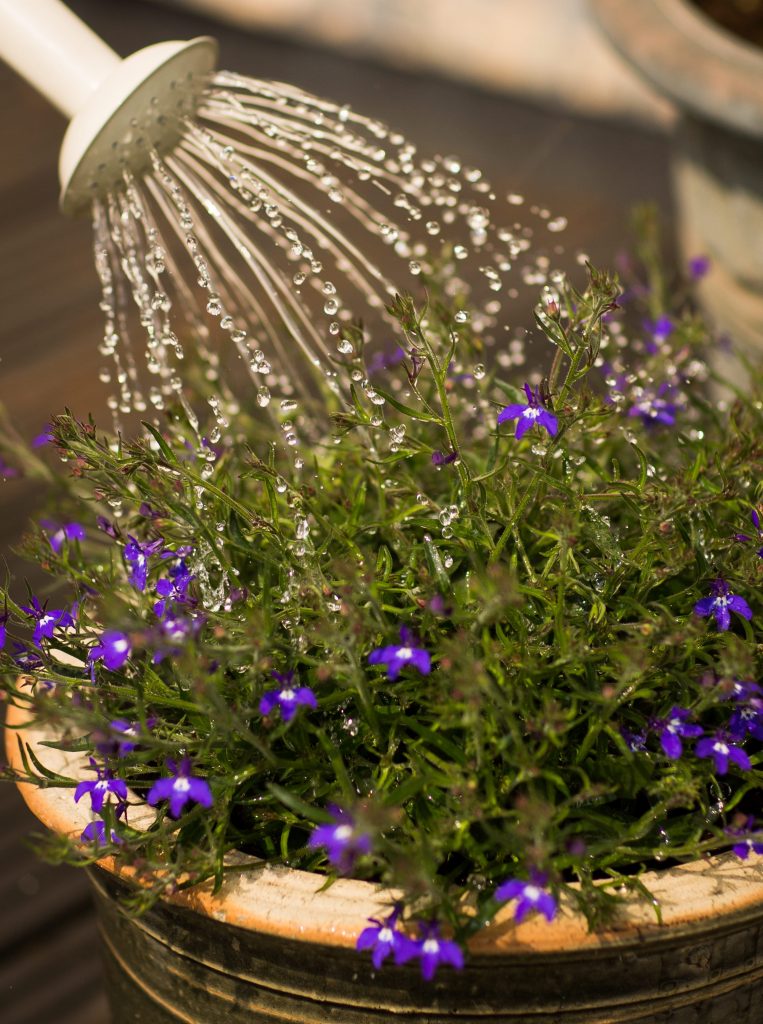
Good Earth Plant Company’s plant stylists get asked about watering more than any other topic. Photo: Torsten Dettlaff/Pexels
If there is one thing we have heard over more than 40 years as plant stylists and indoor plant technicians, it’s this. People still aren’t sure how to water their plants.
Proper watering goes hand in hand with proper placement for successful indoor plants.
With people spending more time inside due to the coronavirus pandemic, and more picking up plants (see below) to keep them company, we’re following up with Part 2 in our advice series.
Watering 101
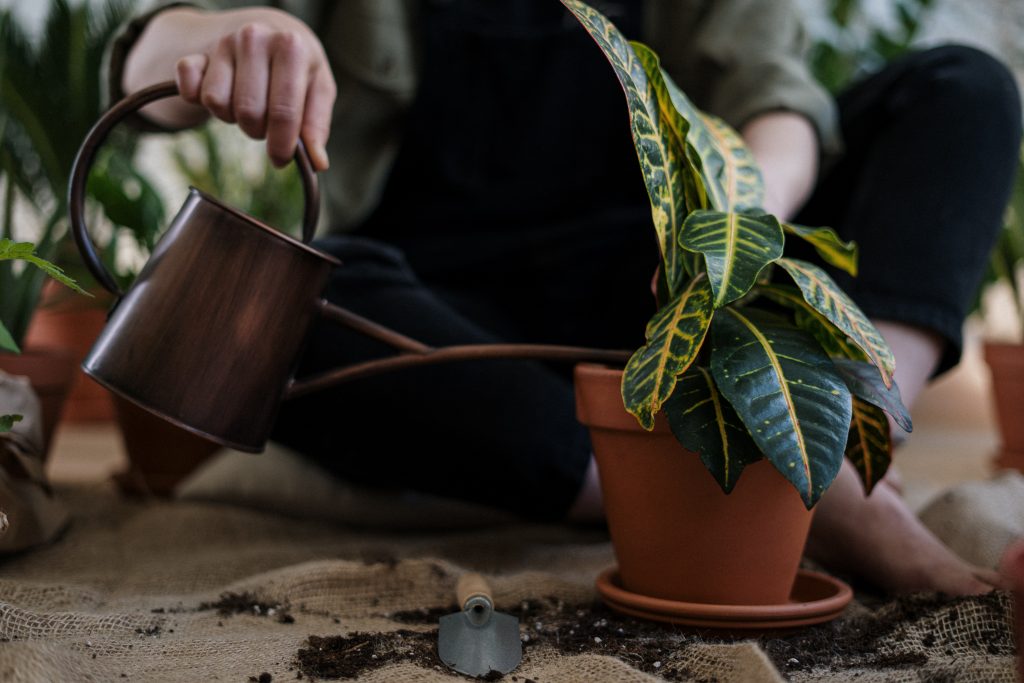
If you’re watering thoroughly and regularly, the average indoor plant can go for one week. But this varies greatly. Photo: Cottonbro/Pexels
Water is life for everything on Earth, human beings as well as plants. How long can a person go without water? It depends – in warm weather, it can happen quickly. Thousands of people end up in emergency rooms every year due to dehydration.
How about your plants? Longer than human beings! If you’re watering thoroughly and regularly, the average indoor plant can go for one week. But this varies greatly. Notice the word “average.” Most plants in smaller pots (four inches) cannot go a full week. In many cases where we have plants in large pots (20 inches) in low light, they can go 4 to 6 weeks between watering.
Cacti and succulents can last much longer, going months without water – although we don’t recommend ignoring them this long! Light, humidity, and air temperature are major factors in the equation.
Good Earth Plant Company sometimes uses a large pressurized water tank (up to 24 gallons) on wheels called a water machine, moving quietly and efficiently through offices. It’s one of our favorite maintenance tools. It delivers water and fertilizer to many plants without spilling, perfect for our clients. We fill it at a standard hose bib with plain room temperature tap water. Even better – the tank has side pockets to hold our gear and a trash bin for trimmed leaves.
Top Watering Warnings
An issue we have in San Diego County is the presence of salts in the water. It’s on the high side and salts can build up over time. So it’s smart to keep an eye on this. Leach them out by occasionally thoroughly flushing the soil. A good shower to trip outside in the rain will help with this.
You should avoid using household water if you use a water softening system. Soft water dilutes minerals by adding salt. This will kill your plants.
Distilled water is NOT a good choice for your plants. You aren’t doing them any favors spending your money on this. Distilled water is stripped of ALL minerals. Plants need these minerals to thrive. Distilled water won’t read “wet” on a moisture meter. You can stick in a glass of water and it will read “dry.”
Except during training, Good Earth Plant Company horticulture technicians do not use water meters. We’re good, and there are other tricks in our toolbox. The best tool we have is a finger – stick it in the soil and see the soil feels moist to the touch. You can use a bamboo stick to probe deeper. Pull it out, and see if wet soil clings to it. It’s like using a toothpick while you are baking.
How much to water, and how often?
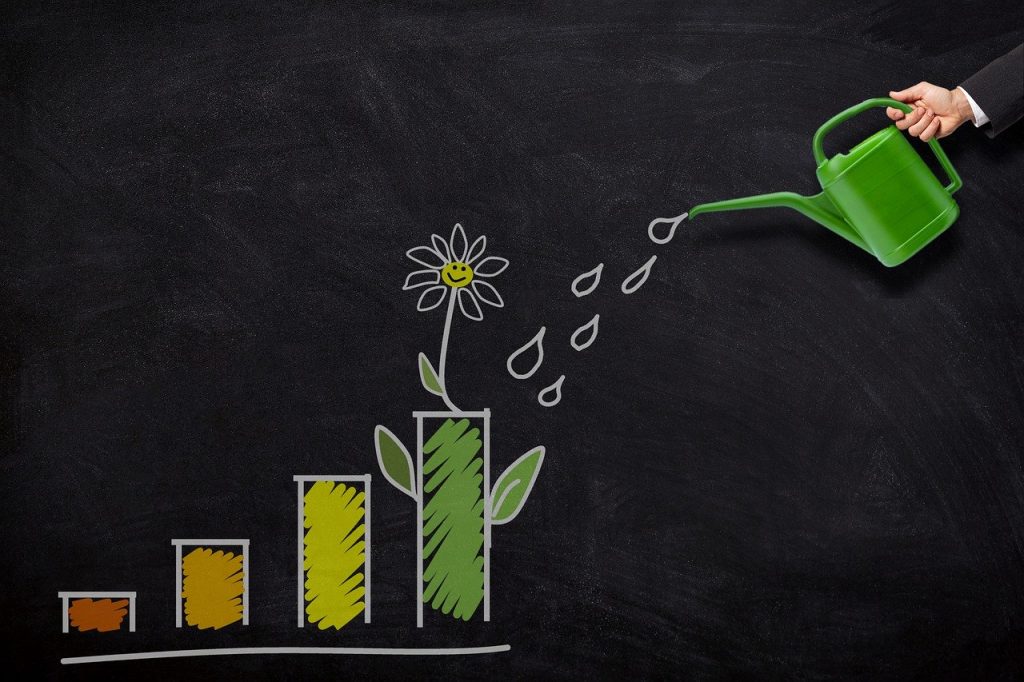
Good Earth Plant Company’s expert plant stylists know just how much water your plants need. Let us help you! Illustration: Tumisu/Pixabay
History is important – when did a plant get watered last? Was it given a little or a lot of water? How old is the plant? Newer plants require additional water in the beginning weeks. Can you easily pick the plant up? I can tell just by the weight of a plant if it is likely to be wet or dry. Try this yourself – pick up a plant and feel how heavy it is before you water it. Then feel it after. Can you feel the difference?
How about “smart” water? Smart water is a commercial brand name. It is tap water turned into distilled water through evaporation, then re-mineralized with electrolytes added. This isn’t worth the money for you or your plants in our opinion.
If you’re buying special gluten-free water, you need to stop. ALL water is gluten-free. Gluten is a mix of two proteins only found in certain grains like barley and wheat. Beer isn’t gluten-free. But water is no problem.
Is bottled water better? Most experts tell us there is not much difference between bottled water and regular tap water. According to a report in Vice, bottled water is a marketing scheme – and it’s working.
Using rainwater for your indoor plants
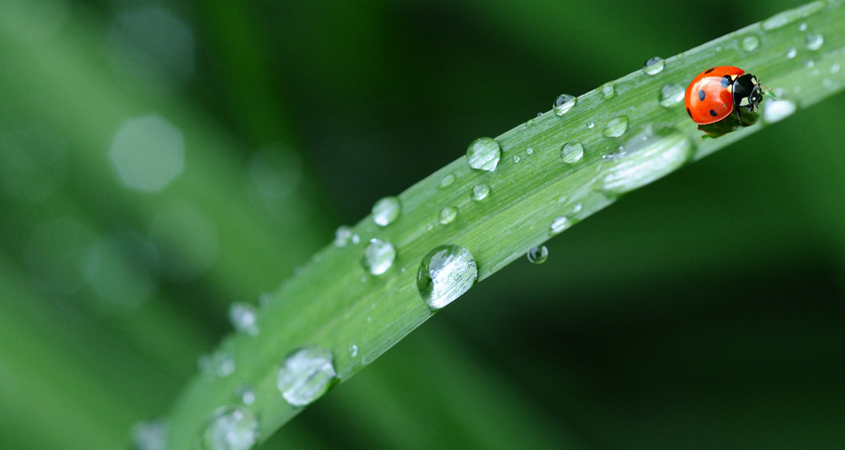
Is it a good idea to put indoor plants outside in the rain? Yes, as long as it’s not too cold or windy. Photo: D.Douk/Pixabay
The truth: tap water is consistently getting cleaner in the developed world including the U.S. With rare exceptions, you can trust the tap. People might not like the minerals, or they claim they taste chemicals. If you chill tap water for 24 hours, nearly any bad taste disappears. Much more eco-friendly than buying water in plastic we throw away after one use.
Soda water is just bottled water with carbonation (air bubbles) added. Save the Perrier for yourself. Diluted hydrogen peroxide is an exception.
Many people like to collect rainwater for their plants, and it’s not a bad idea. But it can be difficult to store in large quantities. Unless it’s in secure containers with lids, it can become a breeding ground for mosquitos. Feel free to put your indoor plants out in the rain (here’s our advice on this) as long as it’s not too windy or cold or turns sunny.
Some say frozen water in the form of ice cubes can be spread on the soil surface of indoor plants and allow a slow release of water to shallow roots. This supposedly works nicely on orchids at home. I’m not sure I agree with this one.
Avoid the opposite with your plants. They do not like hot water. If you put your plants into the shower, be sure to keep the water at room temperature.
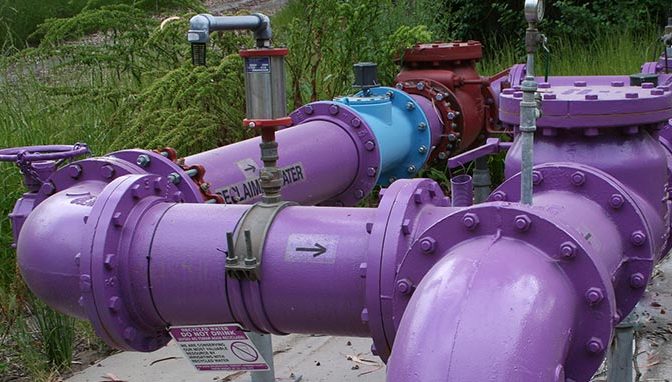
Do you know why recycled water pipes are purple? Photo: ACWA
Recycled water is treated, disinfected municipal wastewater to provide a water supply for non-human drinking. According to the San Diego County Water Authority, it can be used for irrigation, golf courses, fountains, lakes and ponds. Some local farms and plant nurseries use recycled water for their crops. Recycled water is identified by the purple pipes it flows through. Ever wonder why they are purple? Keith Lewinger, the man who helped create the first distribution system in Irvine, picked purple as the identifying color because he was colorblind and could see it easily. True story! Unfortunately, recycled pipe still has limited distribution in San Diego.
Grey water is the water drained from your shower and washing machine – only. You may need a special permit and proper system to recycle and re-use it, and only outdoors. It must be buried for health safety, and it can stink.
Are we all wet?

We are ready to tackle any watering challenge at Good Earth Plant Company. Call on our help!
I hope we’ve wetted (umm, whetted) your appetite. We nearly found ourselves underwater sorting all this out! We wish we could walk on water – some of our customers think we do, but we don’t want to get into a water war over it. But we’re a little worn out – maybe we could use a shot of firewater to wake us up!
Unlike people, plants don’t ever get tired of water. But you can over-water – and it is the fastest way to kill a plant that will not come back. In an upcoming blog, we’ll discuss sub-irrigation and the many benefits it provides. Hopefully, we’ve done all the experimentation for your advantage.
Could you use a hand with your indoor plant care? Call on the plant stylists at Good Earth Plant Company. We love to help! It’s our mission: We enrich people’s lives with plants. Email us at info@goodearthplants.com


